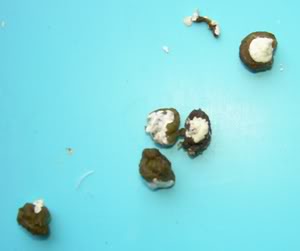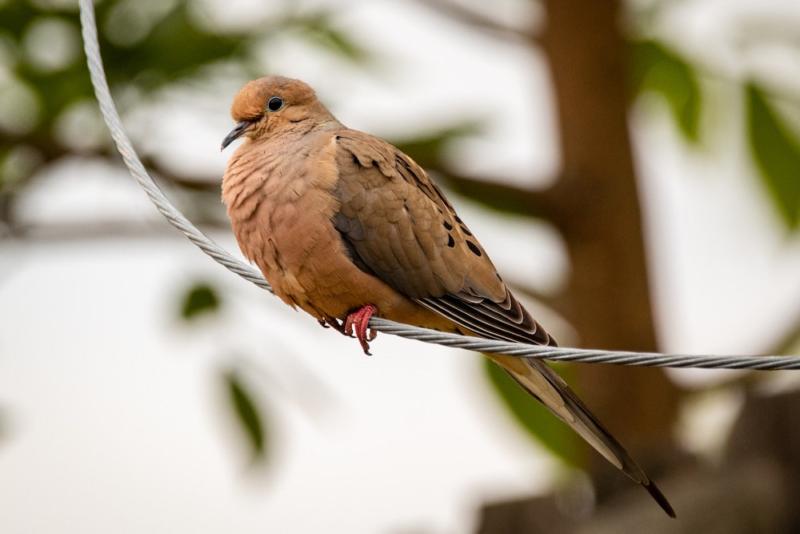Doves are quite popular birds and they look beautiful too. But one of the worst things that they are associated with is a mess.
Have you ever noticed that the mourning doves can leave behind a complete mess around your backyard or patio? Yes, the mourning doves poop a lot. The mourning doves have a higher metabolism rate and are larger than most other backyard birds.
The Mourning dove eats up to 20% of its body weight in food every single day and is almost 5 times heavier than a House Sparrow. In addition, it can store large amounts of food in its crop (see my post on bird digestion for an explanation of what the function of the crop in a bird is), so that its metabolism is always going strong.
Mourning Doves poop more than the average garden bird, but mostly due to the sheer volume of food they eat, their fast metabolism, and the relatively large size of these birds compared to other common backyard birds. The droppings are easy to recognize with the distinct white core of crystallized uric acid.
How often do mourning doves poop?
There are some people who like to watch Mourning Doves feed at bird feeders in their backyards. They have a genuine interest in the doves, but it does sometimes seem like these birds poop way more than other common backyard birds in North America.
Hence, their frequency of pooping is also faster than that of the others. The mourning doves poop about once every 20 minutes and this can create a complete mess around the place where they stay or sit.
The mourning doves poop more frequently because they eat a lot too. They can nibble on any seeds that you will give to them.
What does Mourning Dove poop look like?
Dove droppings are not exceptional and are as natural as the feces of any other animal, but there are certain things that you need to keep in mind.
The mourning doves have a very distinctive poop consisting of a single round-shaped dropping. Each of these droppings is about 1/4 inch (0.6 cm) in diameter. They are mainly dark in color with solid waste with a drop of white-colored uric acid on the top (just like the picture shown). This white-colored uric acid looks like a dollop of cream on the dark-colored poop.

This makes the poop quite different from other birds or animals. Otherwise, the dark-colored part can look a lot similar to that of the poops of other backyard birds or even rodents e.g. rats or mice.
Why do pigeons and doves poop in the same place?
Just like all other birds, pigeons and doves need to excrete their waste products. But one thing that you must have noticed is that the pigeons poop in the same place over and over again.
The main reason why the pigeons poop in the same spot, again and again, is that the pigeons have made it their roosting place too. Once they get comfortable with a place where they can poop, they come back to that place again.
Another reason is that birds often try to poop just before taking off into flight, and therefore more droppings are usually found near edges.
Birds consider themselves quite vulnerable when they are pooping. Though they cannot control where they poop, they try to find a secure and safe spot for excretion. So, once they get a place for that, they will come back there, again and again, to excrete the waste out of their body, and the immense presence of fecal matter does not seem to bother them much.
They also often gather in the same spot when they want to sleep, which only makes the problem worse. The same is the case for seagulls that also collect in large flocks when sleeping.
How to get rid of the pigeons from your property?
The birds like to find a place that can be their safe place. Once they find that secure place, they try to roost over there. But the problem is that pigeons and doves can make a huge mess in your property once you let them be. Their excretion can lead to several diseases and issues. Hence, you need to know some of the best ways to scat the pigeons out:
- You can use deterrents for getting rid of the pigeons. This is the best way to get rid of them without hurting them. The deterrents such as stainless steel wires, spikes and wire coils are the best way to keep these pigeons away.
- You can also use nets so that the pigeons cannot enter into your property. This can also stop any other birds to get into your property and make a mess.
- You can also use scarecrows to stop the doves from entering into your property and to make a mess there. Pigeons can easily get scared from these.
- You may set of a bird feeder at a distant spot in your backyard to lure the doves away from locations where bird droppings are undisireable.
Conclusion
Now that you know about the frequency of defecation, how it looks, and how much the doves can poop, it is important to take action if you want to prevent the doves from defiling your property.
For this purpose, you can use different steps that are mentioned above to get rid of the pigeons or simply clean the affected areas regularly.
This way you can stop your property from getting filled with droppings and a mess. Of course, you might make sure to get them out of your property in the safest way possible without hurting the birds.




